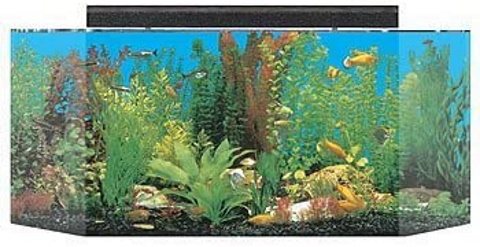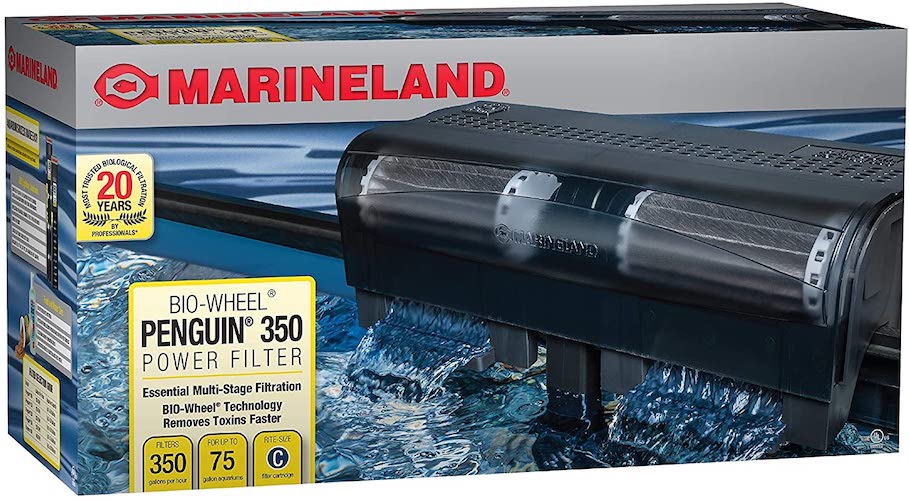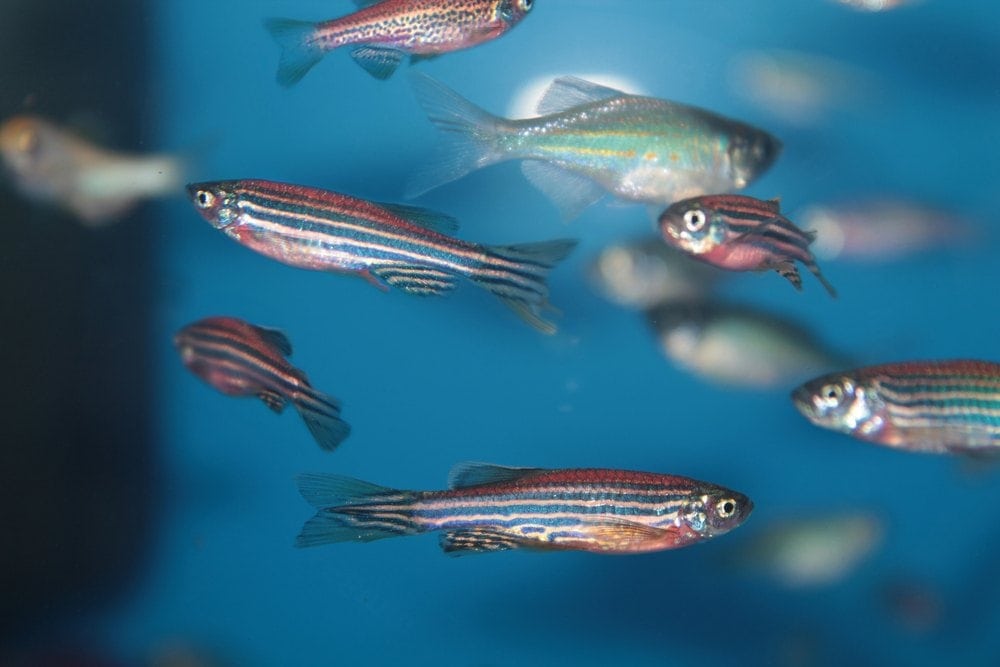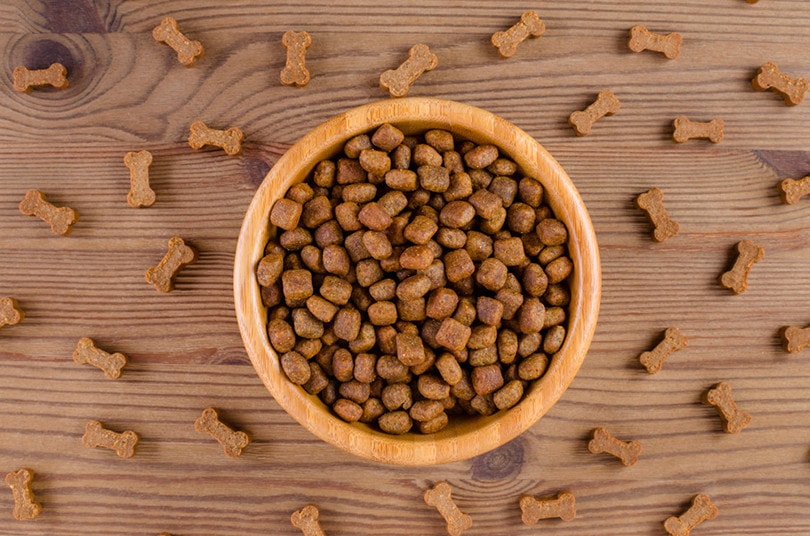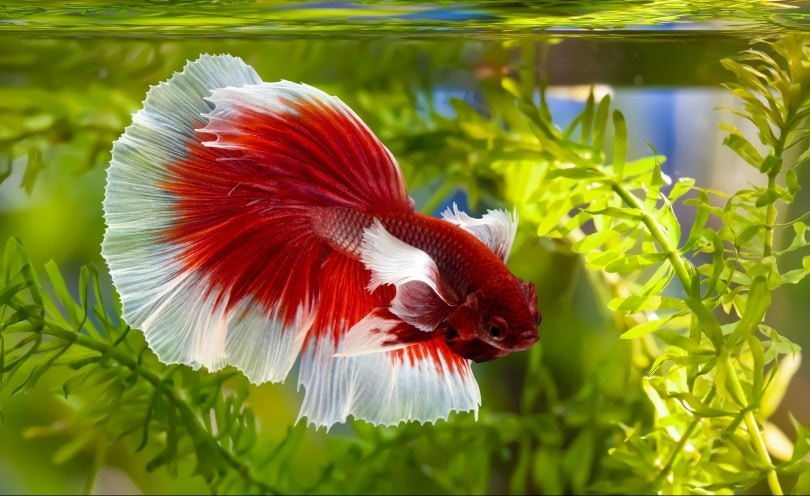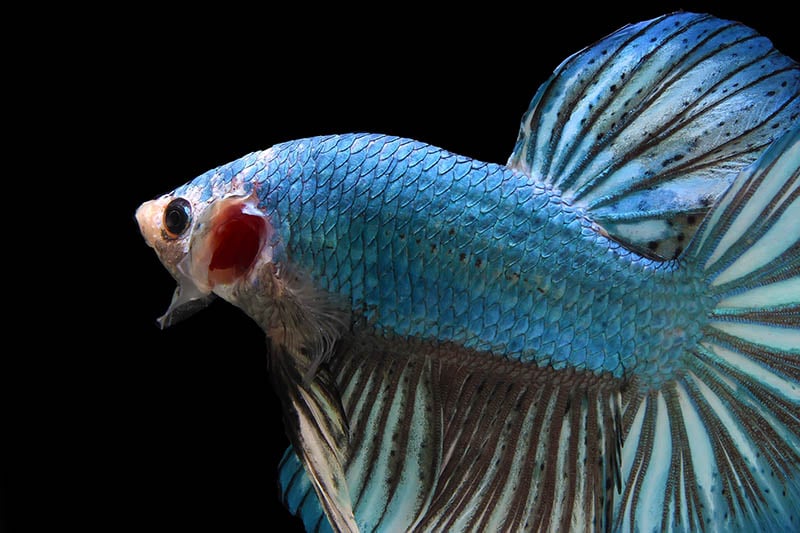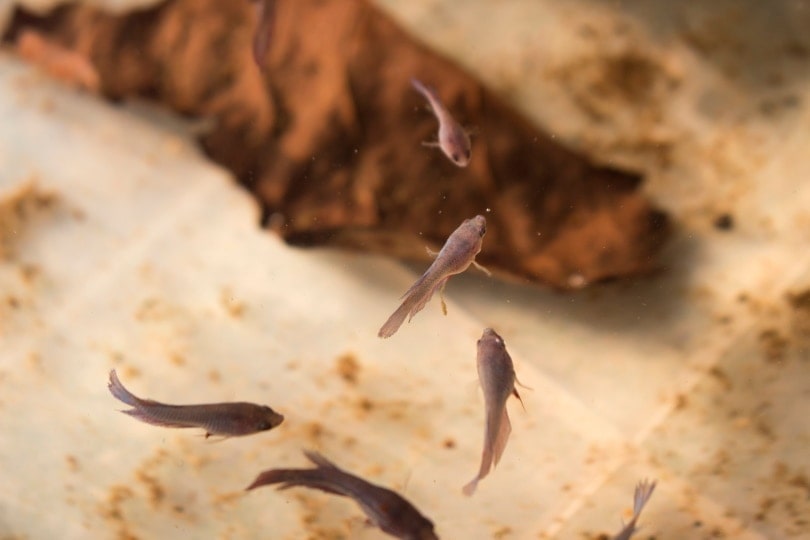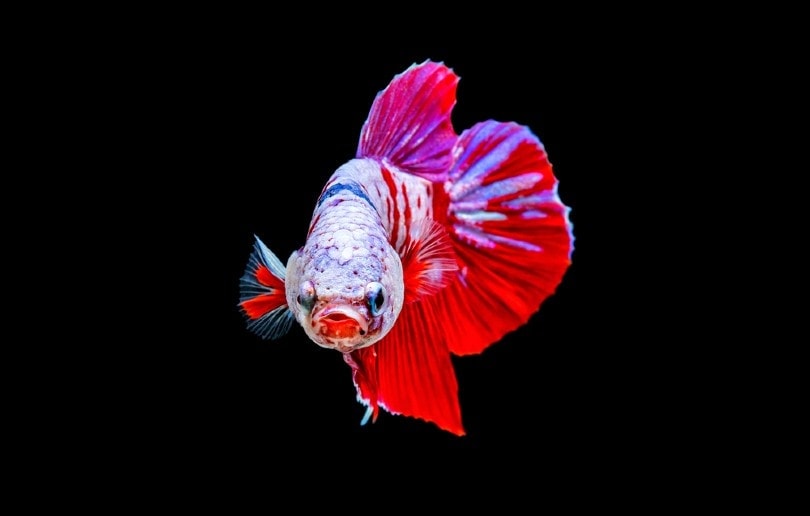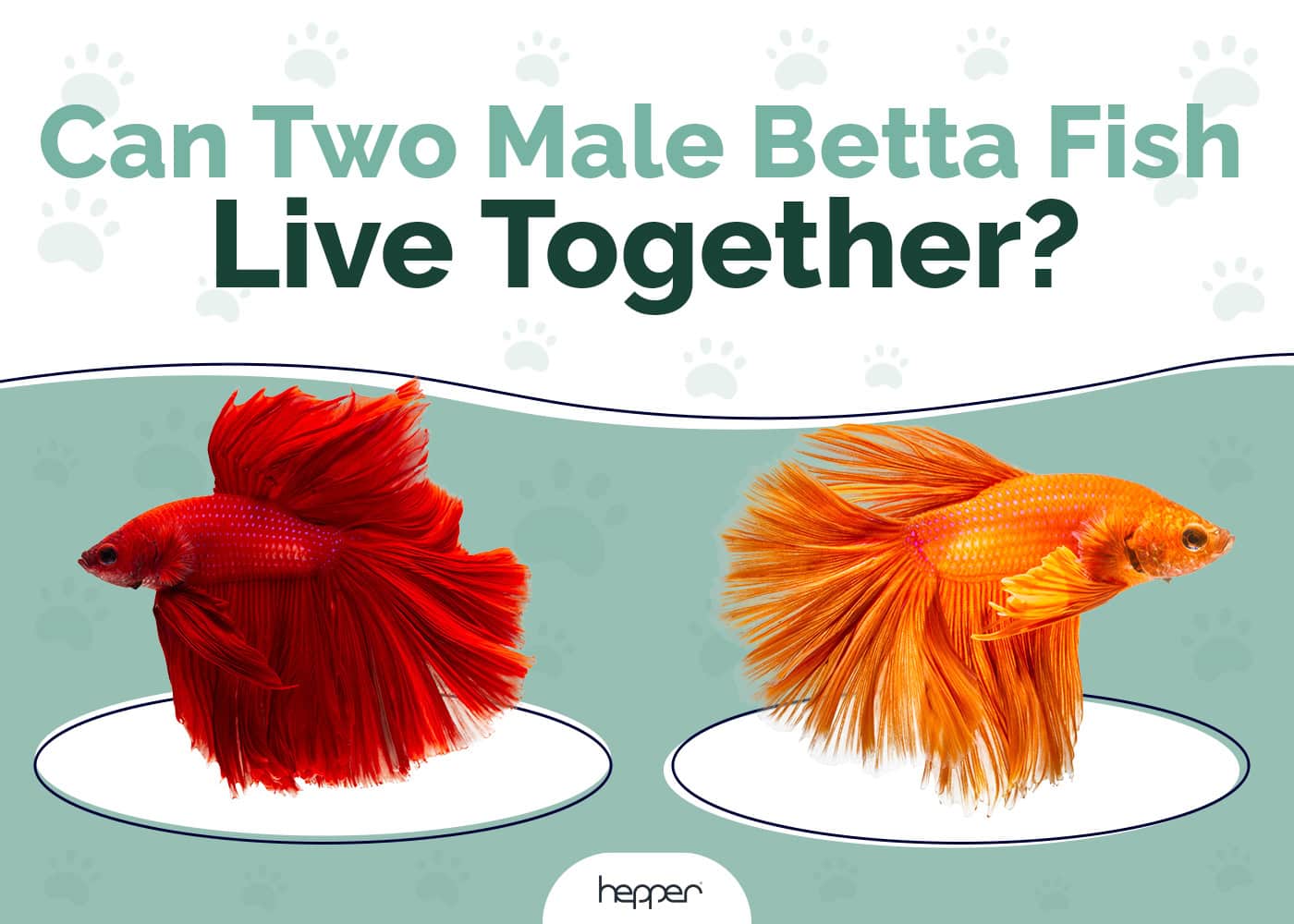What Do Angelfish Eat in the Wild and in Aquariums? Nutrition Facts & FAQ

Updated on
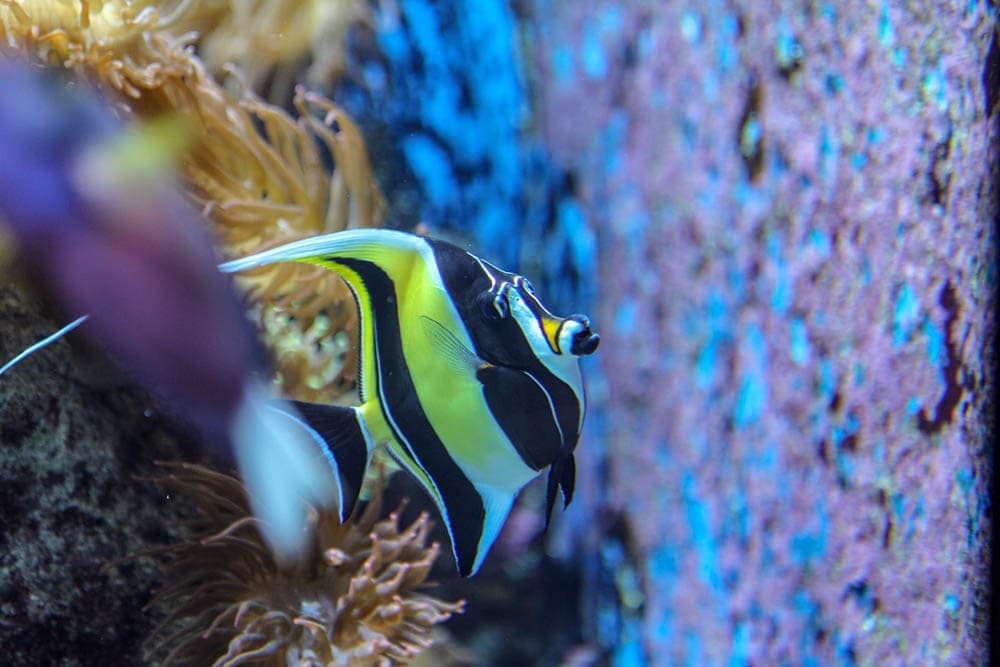
Angelfish (Pterophyllum scalare) are freshwater fish native to South America. This species of cichlid is found in many rivers throughout Peru, Colombia, French Guiana, Guyana, and Brazil. In the wild, they will eat things like shrimp, worms, and some mall amount of plant-based food.
They are usually about 6 inches in length and can grow to about 8 inches tall. They are fairly thin fish and they come in a variety of patterns and colors, from a black-and-silver marble to stripes, to solid silver. They are popular for aquariums because of their beauty and the fact that they are peaceful fish that gets along well with most species.

What Do Angelfish Eat in the Wild?
In the wild, the freshwater angelfish often feed at the surface or mid-water of the river. They feed on small insects, invertebrates, and small fish. They are meat eaters and will also eat larvae, worms, shrimp, and whatever meat they can find. They do eat a small number of plants and algae to round out their diet. They have a high protein diet in the wild and aquarists should try to feed captive angelfish a similar diet to keep them at peak health.
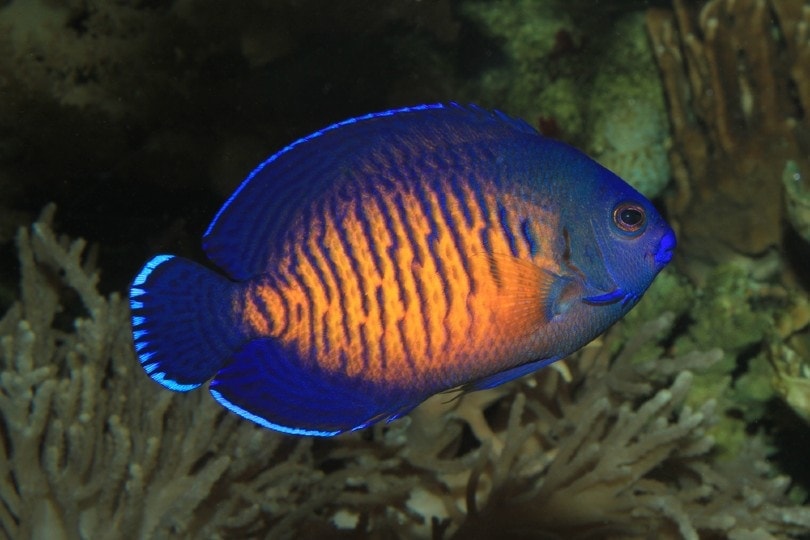
What Do Angelfish Eat in an Aquarium?
If you have freshwater angelfish in your aquarium, it’s important to make sure they get the right amount of protein to keep them healthy. In the wild they are omnivores, eating a fair amount of meat, so you will need to make sure to reproduce their high-protein diet as much as possible. Here are a few options for feeding your angelfish:
- AqueonTropical Flakes and Aqueon Shrimp Pellet Tropical Fish Food are two high-protein dry fish food options to feed your angelfish.
- You can also feed it live food, such as shrimp, guppies, and a variety of worms, i.e. bloodworms, or mealworms. If you choose to feed live food to your fish, make sure they are free of bacteria and parasites so you don’t poison your fish.
- Guppies, shrimp, and worms can also be bought frozen and thawed to feed to your angelfish, thus minimizing the risk of parasites. Freeze-dried versions of these foods are also an option for feeding your angelfish with less of a risk of parasites and bacteria.
- Angelfish are omnivores and will enjoy some plant foods to round out their diet. You can add plants to the aquarium that angelfish might gnaw on or provide some prepared vegetables, such as small amounts of lettuce. Tetra PRO PlecoWafers Complete Diet for Algae Eaters Fish Food is an algae wafer supplement that angelfish like to eat.
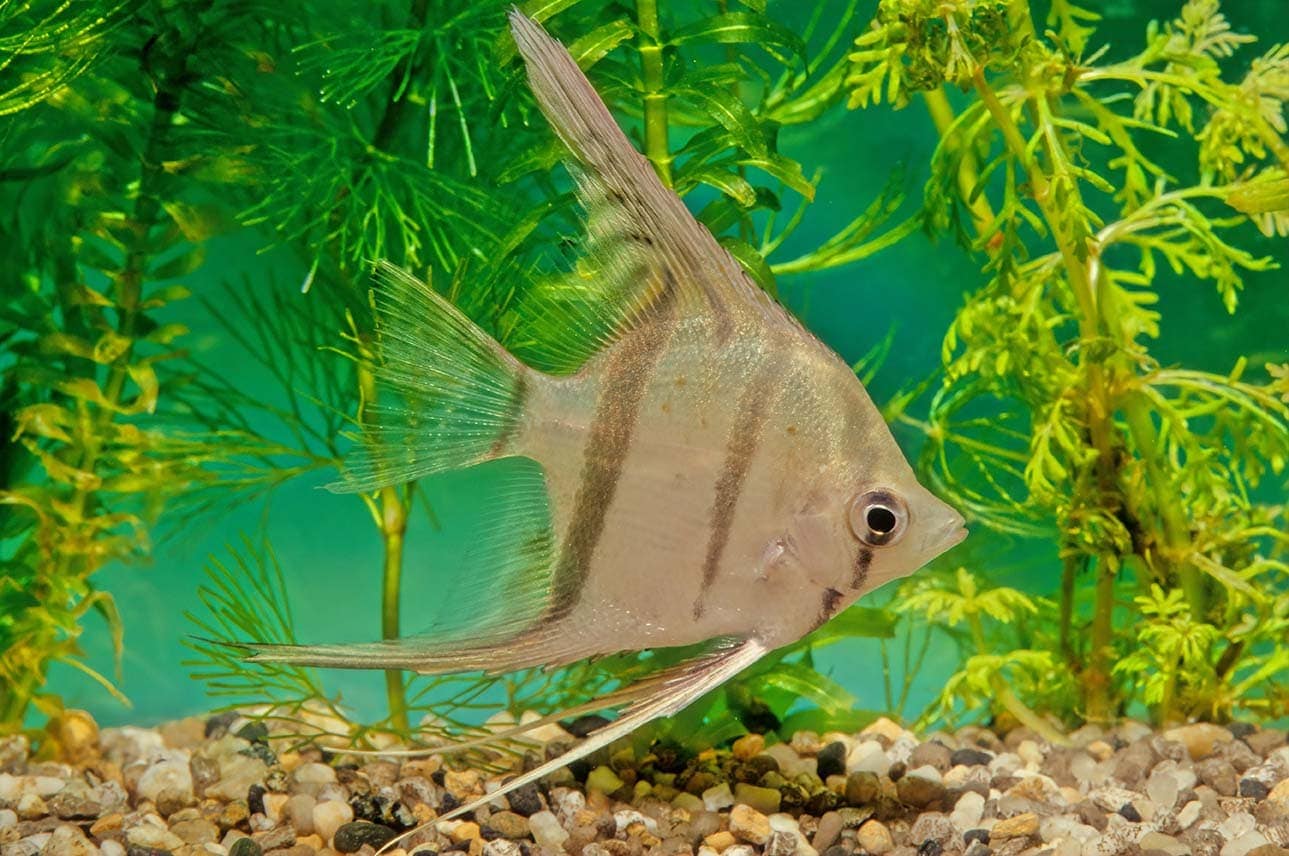
How Often Should Angelfish be Fed?
Young angelfish will need to eat 3 to 4 times a day and will require more live food than an older angelfish might need. Remember to be careful with live food and make sure it’s as fresh as possible to avoid bacteria and parasites. Older angelfish can be fed twice a day using pellets and freeze-dried food but will enjoy live or frozen live food as well. Older fish may become overweight as they age so it’s important to keep them on a strict feeding schedule.
Conclusion
The diet of a wild angelfish is high in protein since they feed on invertebrates, insects, worms, and small fish. Captive angelfish will need a similar high-protein diet to keep them at peak health. You can feed it tropical fish food and supplement it with algae wafers or some prepared vegetables. Bloodworms, shrimp, and guppies are a few types of live feed that you can give to an angelfish in an aquarium, but you must be careful of bacteria and parasites so these can be bought as frozen or freeze-dried versions as well. Now that you know what types of food angelfish eat, you are ready to feed your angelfish.
See Also:
- 14 Best Tank Mates for Angelfish (With Pictures)
- 15 Types of Angelfish: Common Strains, Care Tips & Pictures
Featured Image Credit: rigel, Unsplash

